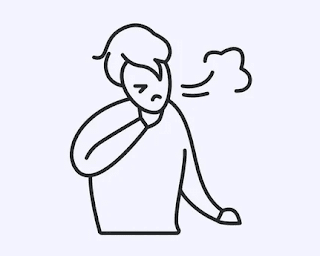Death: Definition, Types, Causes and Signs
What is Death?
Death is the irreversible cessation of all biological functions that helps to sustain an organism. The remains of a dead organism normally begin to decompose shortly after death. Death is an inevitable, a universal process that eventually occurs in all living organisms.
Types of Death
There are mainly two types of death
1. Somatic Death
It is also known as clinical death. It refers to the complete and irreversible cessation of the function of the brain followed by the cessation of the function of the heart and lungs.
2. Molecular death
It is also known as cell death. It refers to the complete and irreversible cessation of individual tissues of the cells. It takes place after the somatic death and in this type of death individual cells and other biomolecules in the system die.
This happens due to the loss of blood flow and oxygen for the survival of cells and tissues.
Causes of death
1. Asphyxia
The death of an individual due to interference with the intake of oxygen is known as asphyxia. For example, death at a fire scene is caused due to intake of extremely poisonous gases like carbon monoxide.
This gas binds with the hemoglobin present in the blood and cut off the supply of oxygen in the blood. This will eventually lead to loss of consciousness and death.
Other examples of asphyxia are death through hanging and strangulation. Here the supply of oxygen is cut off due to extreme pressure by rape on the esophagus.
2. Blunt Force Injury
The death of an individual due to an injury by a non-sharpened object like a bat or pipe is known as death by blunt force injury. Blunt force injury can tear the tissue underneath the skin.
This will lead to the development of abrasions and bruises due to bleeding from tiny ruptured blood vessels under the skin. Death by blunt force injury can cause instantaneous death with little visible damage.
3. Sharp Force Injury
Death of an individual due to an injury by a sharpened edge object like knives or blades is known as death by sharp force injury. A sharp force injury can cut the tissue which is long and deep that result in profusely bleeding and death due to loss of blood.
Death by sharp force injury is not generally instantaneous but it happens due to loss of blood and not timely medical attention.
4. Gunshot Wound
Death of an individual due to intake of drugs in excess amounts like LSD, Morphine, etc, or poison which induces toxicological effects in the body is known as death by drug abuse. Drugs can also alter a person's judgment and psychomotor skills which causes fatal accidents.
Drugs are also often the source of acts of violence that results in death.
Signs of death
Following are the signs of death that occur after death and are helpful in the estimation of the approximate time of death.
1. Immediate Changes (Somatic Death)
- First change is immediate irreversible cessation of the function of the brain including the brainstem. This is the earliest sign of death with the stoppage of functions of the nervous system. There is insensibility and loss of both sensory and motor function.
- Second change is irreversible cessation of respiration. Complete stoppage of respiration for more than 4 minutes usually causes death. No visible respiratory movement can be seen or felt. Breadth sounds cannot be heard from any part of the lungs.
- Third change is irreversible cessation of circulation. Stoppage of a heartbeat for more than 3-5 minutes is irrecoverable and results in death. This is shown by the absence of an ECG curve and the tracing shows a flat line without any elevation or depression.
2. Early Changes (Molecular Death)
- First change changes in skin and facial pallor. Skin becomes pale and ash-white due to the stoppage of circulation and drainage of blood from the capillaries and the small vessel. The skin loses its elasticity and lips appear brownish, dry, and hard.
- The second change is the primary relaxation or flaccidity of muscles. Muscle lose their tonicity and become flaccid.
- Third change is constant flattening and pallor. The areas which remain in contact with the ground become flat and the blood from the vessel of these areas is pressed out.
- Another change is in the eye which includes loss of corneal and papillary reflexes. The pupils become dilated after death due to the relaxation of the muscles of the Iris. There is opacity and haziness of the cornea due to the dying and deposition of dust and debris over it.
Other important changes are:
(a) Algor mortis
After death, the body undergoes a process in which it equalizes with the environmental temperature.
(b) Livor mortis
This condition happens when the blood circulation in the body ceases.
(c) Rigor mortis
Immediately after death, a chemical change occurs in the muscles that cause them to become rigid.
3. Late Changes
- First late change is putrefaction of the body in which the process of decay of the body starts due to the action of bacteria. This happens due to the decomposition of proteins and the liquefication of most organs. The rate of putrefaction depends upon factors like temperature, moisture, air exposure, light exposure, etc.
- Second late change is adipocere formation in which a greasy decomposition product is formed by hydrolysis and hydrogenation of tissue fats once formed, it appears stable for extended periods. Adipocere has generally formed due to the action of bacteria in warm, damp, and anaerobic environments.
- Third late change is mummification in which removal of moisture from the body is done and only dried form that would not easily decay remains.







